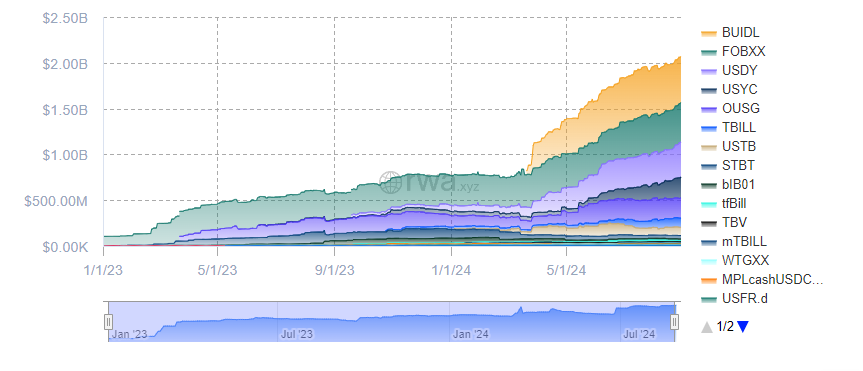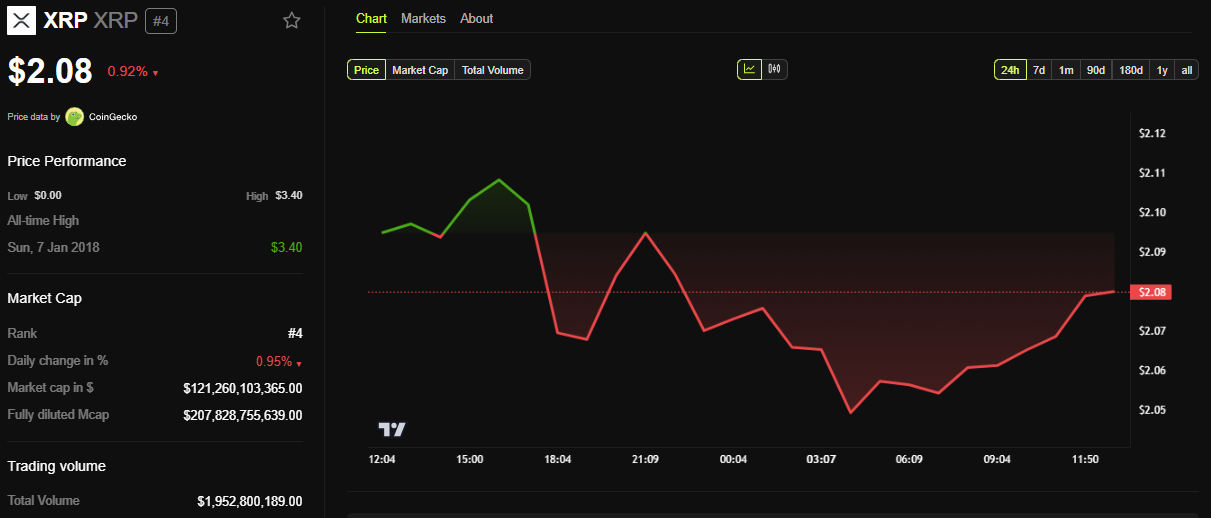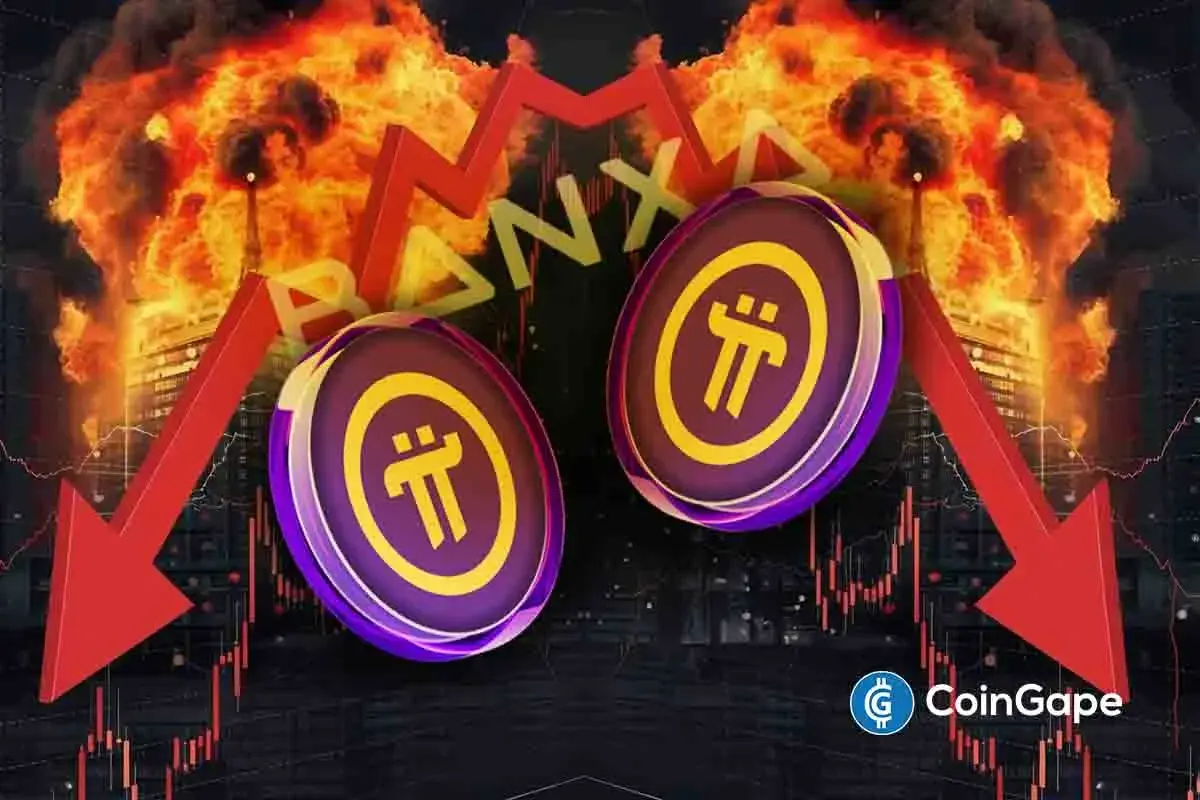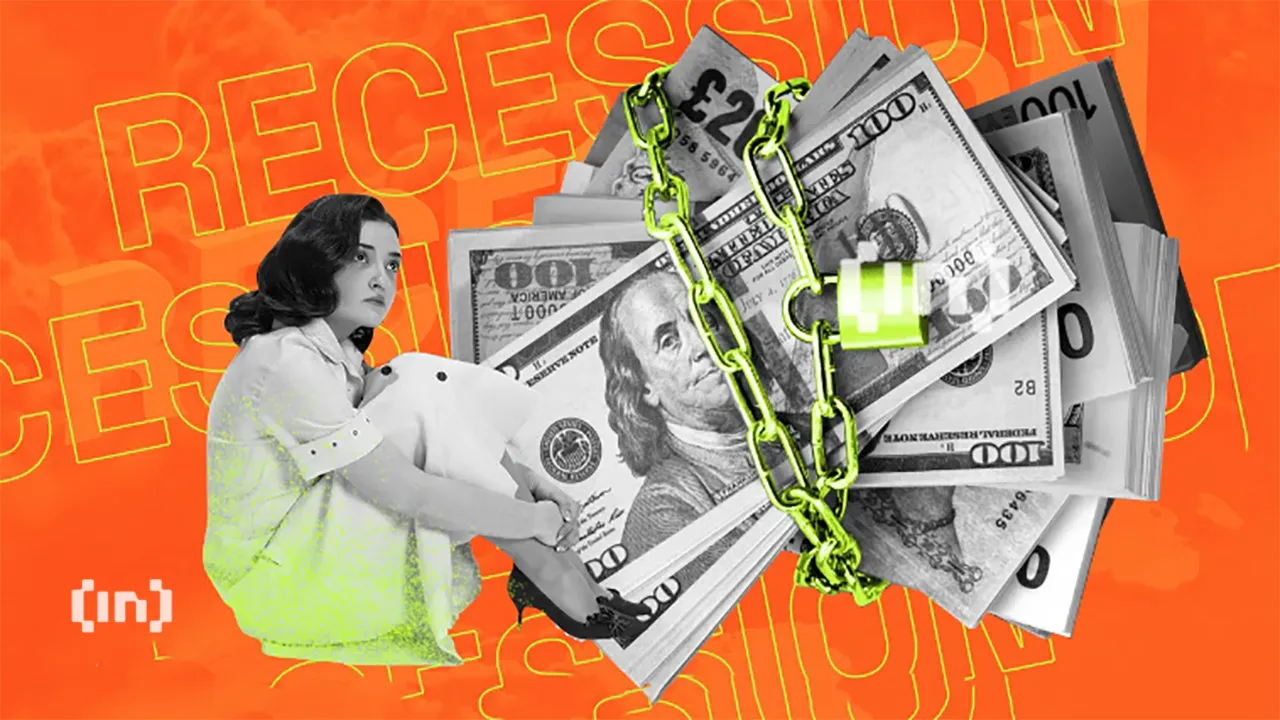Market
Hamster Kombat TGE & Airdrop, and More

The crypto market was abuzz this week with a series of big events. Among them were Telegram’s CEO facing legal challenges in France, the TON blockchain experiencing technical disruptions, and the scheduling of the long-awaited Hamster Kombat Token Generation Event (TGE) taking place.
These developments have drawn the attention of crypto investors and traders.
Concerns Over Bitcoin’s Centralization Amid Mining Power Consolidation
The crypto community is increasingly worried about Bitcoin’s centralization, fearing it might undermine the principles that made it revolutionary. Data from BTC.com reveals that two mining pools, Foundry USA and AntPool, now control approximately 57% of Bitcoin’s total network hashrate. This concentration of power is alarming, as it could lead to potential censorship and a shift away from Bitcoin’s decentralized ethos.
Foundry USA, owned by Digital Currency Group, aligns with US interests, while AntPool, operated by China’s Bitmain Technologies, represents Chinese influence. This geopolitical divide has sparked debates on the future of Bitcoin, especially as the rivalry between these mining giants intensifies.
Read more: Liquid Bitcoin Hashrate Protocol: A Guide to Mining Bitcoin With NFTs
Bitcoin mining pools allow individual miners to combine their computational power, increasing their chances of successfully mining a block. However, the growing dominance of a few large pools raises concerns about the centralization of mining power and its implications for Bitcoin’s decentralization.
Tokenized Real-World Assets Market Surpasses $10 Billion
The tokenized real-world assets (RWAs) market has reached a significant milestone, surpassing $10.9 billion. This growth, driven by strong demand for private loans and US Treasury debt, represents a $2 billion increase since the beginning of the year.
The tokenized US Treasury market has experienced substantial growth. Its total value expanded from $726.23 million to $2.07 billion in 2024.

Tokenized RWAs offer advantages such as greater liquidity, easier asset transfers, and enhanced regulatory compliance through smart contracts. However, the sector faces challenges that include establishing the legitimacy of tokens, ensuring their legal acceptance in courts, and securing smart contracts. Addressing these challenges is essential for tokenized RWAs to achieve widespread adoption.
Viral Telegram Game Hamster Kombat’s TGE Set for September 26
Hamster Kombat, a tap-to-earn game on Telegram, has announced that its Token Generation Event (TGE) and airdrop will occur on September 26. Touted as one of the largest in crypto history, this airdrop will allocate 60% of its volume to players, with the remainder used to enhance market liquidity and develop the game’s ecosystem.
The airdrop was initially scheduled for July but was postponed due to operational challenges. The Hamster Kombat team has since worked closely with the TON ecosystem to ensure a smooth event.
Major exchanges such as Bitget, Bybit, Gate.io, and KuCoin have already listed the HMSTR token for pre-market trading, sparking significant interest before the TGE.
Furthermore, the development team plans to launch Season 2 of Hamster Kombat. In this phase, they aim to introduce new features to keep players engaged and attract new users.
“This begins the transformation of Hamster Kombat from a game into a gaming platform, similar to how Valve moved on from launching cult-status games to Steam, the largest game marketplace for PCs,” the team shared with BeInCrypto in an email.
Toncoin Experienced Slight Surge Post-Pavel Durov’s Release
Telegram CEO Pavel Durov was released from custody on August 28 following a four-day detention in France. Durov is under judicial supervision, required to post a €5 million (approximately $5.50 million) bond, and barred from leaving the country.
BeInCrypto reported that French authorities arrested Durov on August 24 at Le Bourget airport near Paris on multiple charges. These charges included facilitating drug trafficking, organized fraud, and distributing pornographic content involving minors. They also cited his refusal to cooperate with law enforcement, withholding critical information necessary for legal investigations.
Following his release, Toncoin, the native token of The Open Network (TON) blockchain, which is closely associated with Telegram, saw a significant price surge. The token’s value jumped 8.3% within just 20 minutes.
TON Blockchain Faces Technical Challenges Amid Network Outages
TON blockchain faced significant technical challenges this week, leading to multiple outages. On August 27, the network stopped producing blocks for approximately seven hours, resuming normal operations the next day. However, another disruption occurred, causing further delays.
These outages were attributed to an overwhelming influx of transactions related to the newly launched DOGS meme coin. The TON Blockchain team has assured users that their assets are not at risk and is working on solutions to prevent future disruptions.
According to Tonscan data, TON blockchain has resumed normal operations at the time of writing. Despite the resolution, the outages have raised concerns about the network’s ability to handle surges in activity.
DOGS Meme Coin Faces Market Volatility Post-TGE
The DOGS meme coin debuted on Telegram and experienced a dramatic 25% drop shortly after listing on major exchanges. This sharp decline has sparked mixed reactions among airdrop recipients, with some celebrating their free tokens while others express disappointment over the listing price.
Despite this volatility, DOGS maintains a market capitalization of over $614 million, securing its place among the top 100 crypto assets. The meme coin currently operates on the TON blockchain. It offers utility within the Telegram ecosystem, rewarding long-standing and active users based on their account age and activity.
Read more: 7 Hot Meme Coins and Altcoins that are Trending in 2024
Looking ahead, the DOGS team plans to introduce additional features, including mintable meme stickers and customizable content, which could help stabilize the coin’s value and expand its utility within the Telegram ecosystem.
Disclaimer
In adherence to the Trust Project guidelines, BeInCrypto is committed to unbiased, transparent reporting. This news article aims to provide accurate, timely information. However, readers are advised to verify facts independently and consult with a professional before making any decisions based on this content. Please note that our Terms and Conditions, Privacy Policy, and Disclaimers have been updated.
Market
Matchain’s Petrix Barbosa Talks the Future of Digital Identity


In an engaging session during Paris Blockchain Week, BeInCrypto caught up with Petrix Barbosa, the innovative mind behind Matchain, a blockchain venture that’s reshaping how digital identity and data sovereignty are approached.
Barbosa, who transitioned from a successful career as a venture capitalist, where he managed investments across 250 projects, brings a wealth of experience and a unique perspective to the blockchain landscape. Petrix Barbosa’s insights reveal a compelling vision for the future of blockchain, focusing on user empowerment and innovative use of technology to solve enduring problems in digital identity and data management.
Petrix Barbosa Discusses Matchain and its Mission
Matchain is a layer 2 blockchain platform that primarily addresses the challenges of identity and data sovereignty. Our mission is to empower users by giving them control over their digital identities and data, thus ensuring that they’re the primary beneficiaries of their online presence.
Barbosa on His Pivot from Venture Capital
In my time as an investor, I witnessed many great ideas fail to reach their potential due to the lack of a substantial user base or poor market timing. This inspired me to transition from funding projects to creating a platform that not only serves my vision but also provides tangible solutions to widespread issues in the blockchain community—primarily, user engagement and application.
Matchain’s Innovations in the Area of Identity Sovereignty
Matchain introduces a novel approach to managing digital identity. Unlike traditional models where user data is siloed across various platforms, Matchain allows users to have a single digital identity that spans across both Web2 and Web3. This is crucial for enabling a seamless transition and interaction between these two worlds.
How Matchain Integrates Existing Web2 Infrastructure
Our platform acts as a bridge between the decentralized ecosystem of Web3 and the more traditional Web2 infrastructure. By allowing users to manage their digital identities across both platforms, we facilitate a smoother interaction that enhances user experience while maintaining high security and trust.
Future Developments From Matchain
Looking ahead, we aim to expand our user base significantly. Currently, we are backed by strategic partnerships, like the one with Paris Saint-Germain, which not only broadens our exposure but also integrates our technology into mainstream applications.
In the next two years, we plan to onboard millions of users, leveraging our innovative solutions to enhance their digital interactions.
Barbosa on Unique Challenges in Developing Matchain
The biggest challenge was shifting the focus from simply creating a blockchain solution to ensuring it was user-centric and capable of addressing real-world problems. This involved integrating AI to manage and analyze data effectively, ensuring that our platform could deliver personalized and contextually relevant experiences to users.
Matchain Over the Next Five Years
In five years, I envision Matchain at the forefront of blockchain technology, leading the charge in digital identity management and data sovereignty. Our platform will likely become a critical tool for users and companies looking to navigate the complexities of the digital age securely and efficiently.
Disclaimer
In compliance with the Trust Project guidelines, this opinion article presents the author’s perspective and may not necessarily reflect the views of BeInCrypto. BeInCrypto remains committed to transparent reporting and upholding the highest standards of journalism. Readers are advised to verify information independently and consult with a professional before making decisions based on this content. Please note that our Terms and Conditions, Privacy Policy, and Disclaimers have been updated.
Market
Base Launches Strong, But Content Coins Draw Doubt

Content Coins are a new trend gaining attention in the crypto space, especially on Base. They are positioned as digital content with value driven by culture and virality. Supporters see them as a new form of expression.
Critics say they’re just meme coins with a different name. Base is pushing the idea forward, hoping it helps the chain stand out from the rest.
Are Content Coins Really Different From Meme Coins?
Content coins are a new concept gaining traction within crypto communities, especially on Base chain. According to Base founder Jesse Pollak, a content coin “represents a single piece of content,” with the core idea being that the coin is the content and the content is the coin — no more, no less.
These tokens are often created in a specific context, either on platforms like Zora.
Essentially, creators design them to function as standalone pieces of digital content, driving the token’s value through cultural impact, virality, or meme-worthiness—rather than any utility or fundamental backing.

Despite the growing popularity of the term, not everyone is convinced. User Kash (@kashdhanda) dismissed the label, saying, “contentcoins are a silly name for memecoins”. He also pointed out that “memecoins are actually closer to financial content than they are to finance.”
David Tso (@davidtsocy), who works at Base, brings a more supportive spin, comparing content coins to “Instagram posts and TikToks that show their value in real time.”
Is Base Is For Everyone Just Another Meme Coin?
Base is for everyone was the first content coin officially launched and promoted by Base. It made an explosive debut, with a market cap nearing $18 million within its first few hours.
Shortly after its peak, the token plummeted nearly 75%. Since then, it has shown signs of recovery, with its market cap now hovering around $9.6 million.
The coin has gained significant traction in terms of activity, currently boasting nearly 21,000 holders, over 29,000 transactions in the last 24 hours, and a daily trading volume close to $9 million.

Base is using this momentum to push a broader narrative: that all content should live on-chain. Base is actively leveraging this philosophy, framing content coins as a new form of internet-native expression where each token represents a piece of digital culture stored permanently on the blockchain.
Yet, despite this push, Base is for everyone remains the only content coin to break out meaningfully—most others haven’t crossed the $100,000 market cap threshold. While the concept aims to separate itself from typical meme coins by embedding value in cultural relevance rather than pure speculation, many remain unconvinced.
Critics argue that content coins are merely meme coins in new packaging. Still, if the trend takes off, it could position Base to outperform other chains like Solana. It would do this by capturing this narrative and driving unique user activity to its ecosystem.
Disclaimer
In line with the Trust Project guidelines, this price analysis article is for informational purposes only and should not be considered financial or investment advice. BeInCrypto is committed to accurate, unbiased reporting, but market conditions are subject to change without notice. Always conduct your own research and consult with a professional before making any financial decisions. Please note that our Terms and Conditions, Privacy Policy, and Disclaimers have been updated.
Market
Pi Network, Grayscale’s Altcoin Shake-Up

This week in crypto recorded several key events across various ecosystems that will continue shaping the industry.
From major partnerships to investment decisions and scam allegations, the following is a comprehensive roundup of crypto news this week.
Mantra Crash: From Billion-Dollar Hype to Fragile Liquidity
This week in crypto Mantra’s powering token lost $90% of its value amid allegations of insider dealing and liquidity fragility. Once hailed as a rising star in the RWA (real-world asset) narrative, OM’s collapse wiped out over $5.5 billion in value.
Reports revealed a disturbing pattern of concentrated wallet activity and low liquidity pools, which made OM highly vulnerable to sudden exits.
On-chain sleuths identified one trader whose aggressive selling triggered a cascade of liquidations. This highlights the risks of low-float, high-hype tokens in an illiquid market environment.
“This was due to an entity(s) on the Binance perpetuals market. That’s what triggered the entire cascade. The initial drop below $5 was triggered by a ~1 million USD short position being market-sold. This caused over 5% of slippage in literal microseconds. That was the trigger. This seems intentional to me. They knew what they were doing,” the analyst stated.
Pi Network: From Chainlink Buzz to Transparency Fears
Pi Network recorded strong optimism this week as its native Pi Coin surged by double digits. BeInCrypto attributed the surge to the announcement of a key integration with Chainlink.
They pitched this strategic collaboration as a gateway to real-world utility. Specifically, it positioned Pi closer to the broader DeFi and smart contract ecosystem. However, the euphoria proved short-lived.
Market sentiment quickly soured as analysts began comparing Pi Network and the recently collapsed OM token.
Allegations suggest that, like the OM token, Pi coin lacks full clarity around circulating supply, wallet distribution, and centralized control. To some, these are potential red flags in an increasingly regulation-sensitive industry.
“The OM incident is a wake-up call for the entire crypto industry, proof that stricter regulations are urgently needed. It also serves as a huge lesson for the Pi Core Team as we transition from the Open Network to the Open Mainnet,” wrote Dr Altcoin.
Pi coin reversed gains within days, falling 18% from its weekly high. At the time of writing, PI was trading at $0.6112, up by a modest 0.7% in the past 24 hours, per CoinGecko.

Grayscale’s Altcoin Shake-Up: 40 Tokens Under Review
This week in crypto also showed that institutional investor interest in altcoins is heating up again, with Grayscale leading the charge.
The digital asset manager unveiled its updated list of assets under consideration for the second quarter (Q2) 2025. BeInCrypto reported that the list featured zero altcoins across sectors such as DePIN, AI, modular blockchains, and restaking. Among the notable tokens being eyed are SUI, STRK, TIA, JUP, and MANTA.
The update reflects Grayscale’s growing thesis around emerging crypto trends, particularly as the firm seeks to expand beyond its core Bitcoin and Ethereum products.
This announcement follows a broader strategic overhaul from three weeks ago when Grayscale reshuffled its top 20 list of altcoins by market exposure. Several older names were dropped at the time, while newer narratives like Solana-based DePIN and Ethereum restaking plays were pushed to the forefront.
The expansion into 40 coins signals Grayscale’s recognition of renewed retail and institutional appetite for differentiated assets. However, inclusion in the list does not guarantee a fund launch. It only indicates Grayscale’s active research.
XRP and SWIFT Partnership: Breaking Down the Rumors
There was speculation this week about a possible partnership between Ripple’s XRP and banking giant SWIFT in crypto.
This narrative was based on a misinterpreted document. A series of cryptic social posts exacerbated the speculation, which some took as confirmation of collaboration between the global payments network and the XRP ledger.
However, BeInCrypto’s in-depth reporting sank the rumors. While Ripple has long pursued banking institutions and SWIFT has shown openness to blockchain innovations, there is no verified partnership between the two.
SWIFT’s public-facing projects around tokenization and digital asset settlement do not include XRP.
Despite the debunking, the rumors sparked an important conversation about XRP’s long-term positioning. The token remains a top-10 asset and a favorite among retail investors banking on utility-driven price appreciation.

With Ripple’s legal battles with the SEC nearing resolution and international CBDC partnerships in the works, the project is far from irrelevant.
US Dollar Dives: What the DXY Crash Means for Bitcoin
The US Dollar Index (DXY) hit a three-year low this week, sending ripples through the crypto markets. Historically, a falling DXY has been bullish for Bitcoin, and this week was no different, with BTC reclaiming above the $84,000 range.
The greenback’s weakness reflects growing fears of fiscal deterioration in the US, as rate cuts loom and Treasury debt soars.
However, that is just the surface. The global M2money supply has been quietly increasing again, especially across Europe and Asia. This reignites the liquidity conditions that fueled previous bull runs.
Japan’s 10-year bond yields hit multi-decade highs, forcing the Bank of Japan (BoJ) into increasingly precarious interventions. As Japanese liquidity spills outward, crypto and risk assets have become inadvertent beneficiaries.
This macroenvironment is ideal for Bitcoin. Weakening fiat, rising global liquidity, and crumbling bond market confidence create a perfect storm.
Disclaimer
In adherence to the Trust Project guidelines, BeInCrypto is committed to unbiased, transparent reporting. This news article aims to provide accurate, timely information. However, readers are advised to verify facts independently and consult with a professional before making any decisions based on this content. Please note that our Terms and Conditions, Privacy Policy, and Disclaimers have been updated.
-

 Altcoin24 hours ago
Altcoin24 hours agoExpert Predicts Pi Network Price Volatility After Shady Activity On Banxa
-

 Market24 hours ago
Market24 hours agoEthereum Price Fights for Momentum—Traders Watch Key Resistance
-

 Ethereum20 hours ago
Ethereum20 hours agoEthereum Fee Plunges To 5-Year Low—Is This A Bottom Signal?
-

 Market19 hours ago
Market19 hours agoBitcoin Price Gears Up for Next Leg Higher—Upside Potential Builds
-

 Market22 hours ago
Market22 hours agoIs XRP’s Low Price Part of Ripple’s Long-Term Growth Strategy?
-

 Altcoin20 hours ago
Altcoin20 hours agoHashKey Launches First XRP Tracker Fund With Ripple’s Backing
-

 Ethereum12 hours ago
Ethereum12 hours agoEthereum Price Stalls In Tight Range – Big Price Move Incoming?
-

 Market12 hours ago
Market12 hours agoHow $31 Trillion in US Bonds Could Impact Crypto Markets in 2025





















